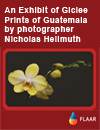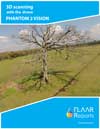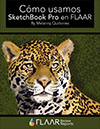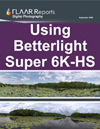Continued trend to mirrorless cameras in year 2021
After Leica since 1961, Rolleflex in 1965, Hasselblad since 1966, I have used Nikon cameras since the 1980's (and Nikon D-series digital cameras for the recent two decades); and also Canon EOS digital for the last two decades. I only added Sony (in late 2019) when we realized that in-camera and in-lens stabilization and light-weight mirrorless Sony Alpha was a good option to test.
We specialize in photography of
- endangered biodiverse ecosystems of Guatemala, especially swamps, bogs, marshes, but also hillsides and hilltop forests
- Neotropical flowering plants that are in really remote areas
- Mushrooms, lichens, mosses, ferns of forests of Lowland Guatemala
- Waterbirds, since these are pictured in Classic Maya art a thousand years ago, raptors, especially owls but also other raptors
- Insects of every size and species
- Spiders and other arachnids (sorry, but they are also photogenic and are a part of the biodiverse ecosystems)
- Traditional Mayan house architecture (palm thatch, no nails, no cement, all authentic).
Nikon is too stuck with its fame and fortune with heavy-duty D-series cameras; so the Nikon mirrorless Z-series got off to a slow cumbersome start. The Nikon Z7II mirrorless camera is not enough and the Nikon Z9 mirrorless camera is wishful thinking (since it does not yet really exist). Canon at least offers a mid-range mirrorless R6 and a better equipped R5 digital camera. And Sony has experience that beats any first-time attempt by Nikon and Canon.
Which Mirrorless Camera? Nikon or Canon or Sony?
Sorry, we do not use Leica or Fujifilm or Hasselblad digital cameras for the last decade: the other brands are far more innovative. And if you want serious medium-format digital quality, Phase One is so much better there is no comparison. Hasselblad lost its status as Phase One had better firmware inside and better Capture One image processing software (better than even Adobe Photograph). Leica lived on its brand status and good lenses: but digital camera quality is the processor and software inside the camera, so Nikon, Canon, and Sony won over 90% of serious photographers (in the 1960's-1990's all of us used Leica and Hasselblad because of their quality lenses and solid camera bodies).
So we just acquired a new Sony Alpha 1, with two macro lenses (since entities in Guatemala hire our team to undertake photography of flora and fauna, including tropical flowers and insects: need macro for all of these).
Since there are three to five photographers on each field trip (plus photography assistants (Senaida Ba and her team), porters, project manager (Vivian Diaz), and social media manager (Roxana Leal), we need lots of different cameras.
Some of the team prefer Canon; others prefer Nikon; others use only Sony; a few are open to try each brand. Since Sony has the most experience with mirrorless, we are testing:
- Sony Alpha a9 II mirrorless (24.2MP Full-Frame Exmor RS CMOS Sensor), late 2019
- Sony Alpha a7R IV mirrorless (61MP Full-Frame Exmor R BSI CMOS Sensor), late 2019
- Sony Alpha 7C mirrorless camera (24.2MP Full-Frame Exmor R BSI Sensor), June 2020
- Sony Alpha 1 mirrorless camera (50MP Full-Frame Exmor RS BSI CMOS Sensor), May 2021
And now also the
- Canon EOS R5 mirrorless camera (45MP Full-Frame CMOS Sensor) purchased Jan 2021
Experience with different camera brands helps to know which camera is best
In the 1960's I used a Leica. My photos in 1961 of rain forest of Tabasco area of Mexico and Mayan pyramid temples and palaces of Palenque, Chiapas, facilitated my high school thesis to win first prize and that helped me get into Harvard. By the 1970's I had three Leicas and three Hasselblad cameras. By the 1990's I had 4x5 and 8x10, both Linhof (the best brand; I liked them better than Sinar).
By 1978 my photos were published by National Geographic and shortly after by Hasselblad magazine. In the 1990's a Japanese coffee-table book publisher hired me to do photography for a volume on ancient art of the Maya, Olmec, Teotihuacan, Mixtec, Zapotec, Toltec, and Aztec civilizations (accomplished 18 months of photography just for this book).
Today (in 2021) we need in-camera stabilization and in-lens stabilization since with three to five photographers hiking through the rain forests or wading through the swamps or marshes of Guatemala, it is not realistic to unpack and set up tripods for each photograph (though when we do bird photography with a Nikon D5 and AF-S NIKKOR 800mm f/5.6E FL ED VR we definitely use our Gitzo Mountaineer tripod with Wimberley gimbal head wh-200).
We are naturally tempted by the Nikon D6 and the Canon EOS 1D X Mark III (we have the Canon EOS 1D X Mark II already and a ton of lenses for it). But these work best with a tripod and telephoto lens (we have 200mm, 400mm, 600mm and the 800mm for the Nikon D810 and D5, as but an example). But when you need a quick photo of a bright colored mot-mot bird it's more practical to have a lightweight mirrorless camera with in-camera stabilization and lightweight 600mm lens with in-lens stabilization.
We are not sitting in a blind all day waiting for a duck or goose to come near... we are wading out in the swamps and marshes to find the waterbirds.
How to get your digital camera repaired?
Half a century ago, if your Leica camera needed repair the first year, they basically simply replaced the camera with a new one. This was included in the purchase price (only needed this once when brand new Leica, on Day One of use, was on a white-water rafting adventure down the Rio Usumacinta (between Mexico and Guatemala) and the supposedly "waterproof case" was filled with water (when we opened the case the Leica was "floating in the water").
Today we have a Sony Sony Alpha a9 II mirrorless camera that was injured when one of our team slipped on the edge of a waterfall (camera did not fall into any water, it fell onto the karst limestone edge; we have a 15 month project in the rain forests and wetlands of the eastern edge of Guatemala (Izabal) and now a 5-year photography project in the rain forests of the northern 15% of the entire country (Reserva de la Biosfera Maya, Peten).
We will update this review once we hear back from Sony Electronics service center.
How soon will Apple iPhone and Google Pixel phone cameras take over?
We have Apple iPhone 11 Pro and iPhone 12 Pro; both are noticeably better than the Apple iPhone X. The RAW mode of the iPhone 12 Pro blows away any point-and-shoot camera and makes you wonder why any heavy camera is worthwhile.
The pano mode of these Apple iPhones and the Google Pixel 3XL and 4XL totally eliminate any need for any panorama tripod head and heavy digital camera (if you need photos only for the Internet and to publish). Although the Google Pixel 5 went downhill instead of better, the Pixel 3 and Pixel 4 do better macro than any iPhone.
We will have an evaluation of all this coming up soon. I fly back to Guatemala June 9th and am out in the Rio Dulce swamps and marches two weeks later; then up in Tikal and Yaxha and Lake Peten Itza areas of Peten a week after that, then to the Guatemala-Belize border area to photograph along the Rio Sarstun.
First posted: June 8, 2021.
Free Reports (Inquiry Form)
Additional links of our FLAAR sites |
| Rigid Printable Materials |
| Printing on Glass |
| Sandwich board for recyclable furniture! |
| Metallic Effects |
Free Download Reports
| Home | About Us | Consulting | About FLAAR Reports | Site Map | Privacy Statement | back to top | |||||
|
|||||||||||
www.digital-photography.org is part of the FLAAR network © 2001-2021. If you notice a bad link, missing photos, misspellings, please report to the webmaster: |
|||||||||||



































































